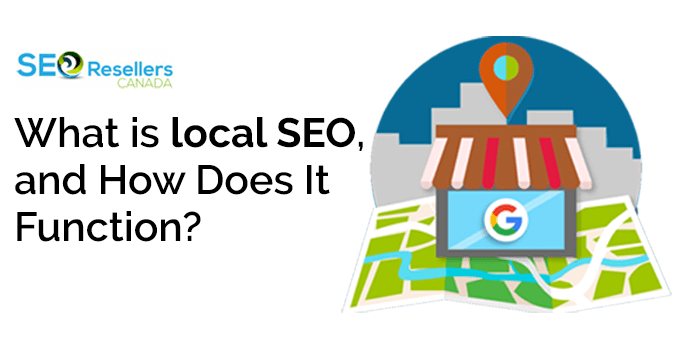Before October 2012, when Google rolled out its EMD update filter (webmasters were still dealing with the fallout of three consecutive Penguin update and Panda updates), websites would rank well on Google by merit of having exact match domains (EMDs). After Google’s update – which affected around 0.6% of all English-based search results – a large percentage of websites completely fell out of the radar.
This meant that websites with domain names like car.com, bank.com, and insurance.com went into obscurity and other websites took their spot.
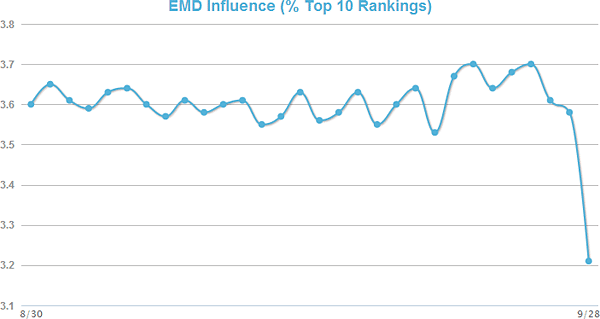
Webmasters took to various internet forums to voice their outrage against Google’s unprecedented attack on their authority. While many were quick to blame Google for acting callously against EMD websites, in hindsight, their revolutionary update makes sense. Most of these websites banked on having EMD domains alone, and that never made sense from a user-experience point of view.
1- What Are EMD Websites Anyway?
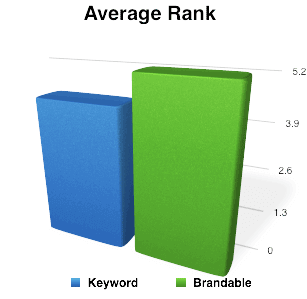
EMD, short for Exact Match Domains, are websites that use keywords in their URL. Names like mechanicalkeyboard.com or membranekeyboard.com used to rank higher up in the search engine results pages. The new algorithm targets those websites that have low-quality content and rely solely on their URL.
The practice of relying on EMDs got so bad that webmasters would get in the habit of adding multiple dashes in their website names, such as mechanical-gaming-keyboard.com and buy-cool-gaming-keyboard.com.
If there’s one thing that Google and other search engines hate, it’s being gamed by webmasters by manipulating SEO. Google wants to improve the user experience, and if a search query on ‘banks’ leads to spammy EMD websites that offer no actual information on banks, then the users will probably blame Google for this. Google is doing what it does best: improve user experience.
So, are EMDs bad news? Not really. EMDs are just one of the several factors that Google uses to determine a website’s position on SERP. This means that if you’re implementing best SEO practices and you have an EMD website, you may leverage over the non-EMD websites.
That is, if you have a high-quality website with good, informative content, then your website will not be affected by the EMD update. Even a cursory look at keyword domains suggests that they rank, on average, 11% higher than non-EMD websites.
What does this mean for non-EMD or partial EMD websites? Google’s update levels the playing field and allows your website, whether it has keywords in the domain or not, to rank high simply based on sheer SEO.
As a general rule, if you have an EMD website, good for you. If not, no one cares, least of all Google and Bing. Skeptics that would suggest otherwise are basing their judgment on anecdotal evidence at best, it’s a classic ‘he said, she said’ based on unsubstantiated accounts from a few webmasters were asking to be ousted anyway.
2- Bouncing Back from an EMD Penalty
If your website got hit by the update and you want to recover, you’ll need to completely revitalize your website’s SEO. This means going back to the drawing board to identify who your target audience is, what it is that you’re trying to sell, and what keywords to search for, among others.
Here’s a general outline on dealing with an EMD attack:
- Get rid of spammy content that offers no real value to the user other than keyword stuffing. Google’s official position is to improve upon the poor quality content as opposed to completely removing them.
- Get your website’s link profile audited to identify spam links from low trust websites. Engage in a link removal campaign to remove these links.
- Start implementing best SEO practices to add new, informational content to your site every day.
- Reach out to high-quality websites in your niche and ask them to link back to you. A good idea is to engage in guest blog posts. You provide them with free content and they link back to you. Win-win.
You can create some high-quality content by hiring SEO specialists. It is a good idea to re-write some of your original content to update it and keep up with the times.
Some websites let Google index all of its pages, including tags, archive pages, categories. Make sure Google only indexes useful and high-quality pages from your website. Ask your SEO specialist to add no-index to unimportant pages.
Social media is another great way to boost your SEO. You should work on integrating social media sites to your website. Try to create a bigger social media presence by setting up a Twitter page, Pinterest profile, YouTube channel, Facebook page, and an Instagram page to increase your brand’s reach.
3- Good SEO Practices + EMDs = Profit
The good news, whether you have an EMD, PMD, or other domain names, is to implement good SEO. The thing with SEO is that it is always on-going and requires prior research if you want to get things straight.
3.1- Research Keywords
Even in the days before Google’s EMD update slashed website ranking, webmasters still needed to stuff their websites with relevant keywords. Choose keywords that have a high search volume, have low competition, and are relevant to your business. A good place to start would be Google’s Keyword Planner. Use SEMrush to analyze what keywords your competitors are actively targeting.
3.2- Title Tags
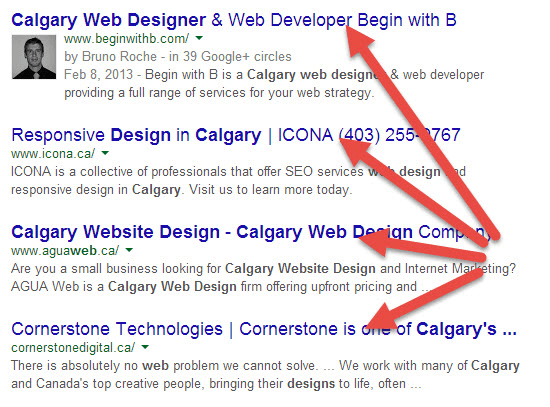
Once you’ve done your keyword research, the most important thing is to write a proper title. The title tells search engines what your page is all about and that your blog post is relevant for that keyword phrase. It is extremely important to keep title tags for each page unique. Google will then highlight your blog post if a user has searched for terms you used in your title tags. This increases your click-through rate and visibility.
Let’s say you’re trying to rank for “Best Hotel Toronto,” then your title tag may look like this, “Best Hotels to Stay in Toronto | Top 10 list”.
3.3- Meta Descriptions

Although meta descriptions are not as important in search engines, they are important if you want users to click on your website. Meta descriptions should make use of relevant keywords written with a compelling description of what the page is all about. Just make sure to keep the length of the meta descriptions to 154 characters.
3.4- High-Quality Content with Relevant Keywords
Your website’s content should be extremely unique and relevant. It should be helpful to users and offer them information. Google will reward you if your content improves the end-user experience and will penalize you if you try to fool it. So for instance, if you have multiple pages with the same content, or if you steal content from other people without crediting, Google will penalize you and if need be, even blacklist you.
3.5- Use Header Tags
Header tags provide a structure to the content on your website. They make the content more enjoyable for users to read and give your writers a good excuse to make use of keywords. The H1 gives the reader an introduction to what your blog is all about. The smaller, H2 headers describe the different talking points that you will cover in various sections of the blog. H3 to H6 headers will serve as smaller sub-heading to split up main topics.
3.6- Internal Linking
Internal links on a page point to another page on the same website. Internal links make user navigation easier, and they tell the search engine that your page is relevant for a particular keyword.
4- Example of EMDs That Are Doing Well
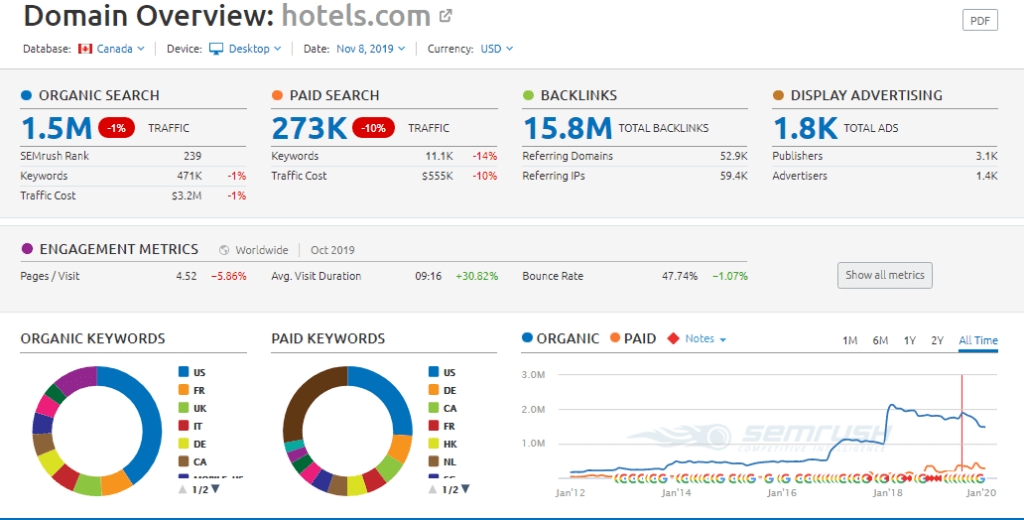
To bust the myth that Google’s algorithm affected all EMDs, we’ll take a good example like Hotels.com. Google loves exact match domains that don’t actively seek to game it. The domain Hotels.com has registered 24 years ago and was purchased for about $11 million. A quick visit to the website reveals that it isn’t just a random collection of buzzwords.
You can make bookings on hotels.com, get discounts, and receive information about travel in general. The website is easy to remember, share, and, and type in for users. A quick analysis of the website using SEMrush reveals it has over 15 million total backlinks from at least 53,000 referring domains. It ranks number one for important keywords such as hotels, hotels near me, hotels com, Niagara Falls hotels, and more. SEMrush pegs its total search volume at an overwhelmingly massive 19.2 million in the US and 1.5 million in Canada.
So no, Google isn’t out there to get your website if it has an EMD. Just make sure you’re implementing good SEO practices and actively trying to improve the end-user experience.
You will notice, however, that hotels.com won’t rank for local listings since they don’t own any local hotels and is only an online travel agency.
The bottom line: Google’s EMD update only penalizes spam links to clean up its SERPs.
5- Should I Buy an EMD?
If you want to buy an EMD, you’ll have to do some serious research since most of the good ones have already been purchased. The market for domains is highly lucrative and many people are willing to shell out millions to buy them, we’re talking multi-million dollar deals. An exact match domain is a great way to cater to user intent and increase your brand’s value since people will know what your site is before they even get to it.
Just make sure to prioritize great content and user experience to get them to purchase your products and service.
There are a few reasons why businesses are willing to pay so much money for these domains.
5.1- Limited Supply
When you own a search friendly and relevant website, you will have it for a long time. It is very unlikely it will become available again. Some people think domains are lucrative investments. If you’re no longer interested in the domain, you can sell it a high price later on. Indeed, many people would work a website’s brand name and increase its position on search engines and then sell it for a profit.
5.2- Match User Intent
Exact match domains match user intent. For instance, if you’re searching for hotels and you live in Toronto, you might search “hotel Toronto” and find grandhoteltoronto.com.
5.3- Improved Brand Recognition
It is human psychology to trust brands that have good domains. They are easy to pronounce and remember. Moreover, it is easy to type them out in search engines and if need be, use them in voice search.
6- Advantages of Exact Match Domains
- Easy for new websites to increase their traffic
- Easy to target anchor texts
- Easy to acquire social mentions
- Easy to dominate any single niche
- Easy to target variations in long-tail keyword phrase set
- Keyword and brand mentions are the same
- Effective at generating commercial intent queries
- Good at ranking for local searches
7- Disadvantages of EMDs
- Makes it difficult to expand brands
- Creates brand confusion
- Your brand may come across as too generic
- It may prove to be too hard to get social media profiles
- EMDs are not easily available
- EMDs are very expensive
- Effectiveness goes down with bad SEO
8- EMDs Create Brand Confusion
The biggest issue with EMDs is the brand confusion that comes with keyword domains. It isn’t easy to own a popular generic keyword for commercial intent. Search engines don’t want a particular website to own keywords, and for good reason.
Commercial intent keywords are not easy to acquire. No search engine wants a single advertise to gain a monopoly over the keywords when several can compete to drive prices up and make it profitable for the search engine. This ensures that healthy completion always exists between brands associated with commercial intent keywords. Any businesses with associated domains should stay very strong as well.
9- How to Choose a Great Domain Name?
The following checklist will help you avoid the mistakes that most entrepreneurs make when choosing domains.
9.1- Choose “.com” TLD
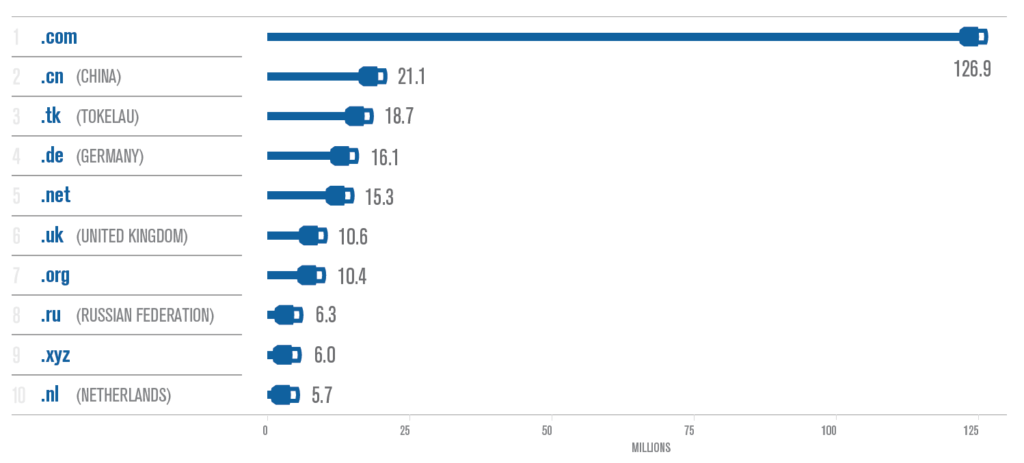
Although there are many domain name extensions to choose from, including .com, .org, and .net, to niche extensions like .mouse, .burger, and even .hotels. Our recommendation is to stick with a .com URL. While it is tempting to finally acquire those exact match domains thanks to the new extensions, the fact remains that .com is still the most credible and establish domain name extension.
Other domain names don’t exactly inspire confidence among users and may even be seen as spammy. Also, most of your audiences, especially those who aren’t as tech-savvy, will instinctively type “.com” at the end of your domain name without thinking twice.
If your website has a domain name like Toronto.hotel, and your users type out Toronto.hotel.com, they will automatically end up on an error page on hotel.com. The fact is that you deal with much less of a headache by sticking with .com. Even smartphones have a .com button.
9.2- Find Keywords for Your Domain
Google still has a soft spot for exact match domains. They can reach position 1 with only half as much content and using only half as many keywords. Just don’t resort to adding dashes between the keywords sine they are statistically proven to be a trick by spammers. If a domain has several hyphens present, this is an indication that they are attempting to trick search engines into ranking their websites more highly.
A single dash should do the job just fine as well, although our advice is to avoid them altogether as well. This is because many of the older EMDs with single dashes that rank higher are old existing domains.
Stick with around 2 to 3 words for a website, anything longer is probably pushing it, for examples, yourgamingguide.com may be long, but is very effective at leveraging user intent. Something like getyourgamingguidehere.com is too big and probably won’t rank well.
4 words is a good practice if you are selling niche products. Just make sure not to exceed four and you should be fine.
9.3- Be Careful with the Use of Stop Words in Keyword Domains
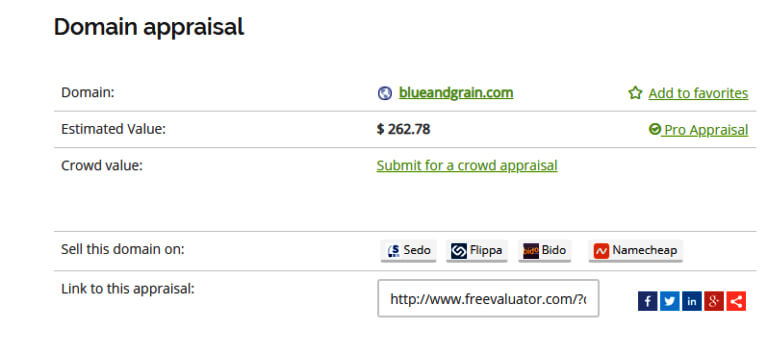
Websites that use stop worlds in their address don’t qualify as true exact match domains, but they may be mildly effective. Stop words are words like “and, “a”, “is” and “I”. Their role in search engine ranking is usually a mixed bag. For instance, the name “bluegrain.com” is valued at around $550+ but the website “blueandgrain” is valued at only $262+.
There are certain exceptions to this rule if the stop word is part of a common phrase, for instance, “highandlow.com” is much more valuable than “highlow.com.”
9.4- Keep the Domain Short
As a general rule, try to keep your domain name below 15 characters. Anything longer will be harder for your audience to remember. Not to mention the fact that users are more prone to entering typos which can lead to loss of traffic. For this reason, it is better to reduce the length of your website domain name.
9.5- The Domain Name is Easy to Pronounce
You should be able to easily share your domain name when writing as well as speaking. If you struggle to pronounce the domain name, then it’s a no-go. This is especially true if you intended to create a professional business with clear commercial intent, then you definitely want to make pronunciation easy.
9.6- Keep it Brandable
Although it is a good idea to use generic keywords, you also want to be able to make your domain name brandable to help it stand out from others. The last thing you want is to get accused of copying someone else or accidentally using a trademark name. Brandable domain names are catchy, unique, and easy to remember. For example, BestBuy.com is much more brandable than BuyStuffOnline.com.
9.7- Don’t Use Hyphens in the Domain Name
As mentioned earlier, avoid entering hyphens in the domain name. They have been associated with spam and search engines view them with a lot of general mistrust. It is entirely possible for your users to end up at your competitor’s site if they forget to enter a hyphen.
9.8- Don’t Use Double Letters
Try avoiding domains that repeat letters; this is because it increases your chances of losing traffic to typos. A domain like siteeerie.com is more prone to typos (much more since the ‘e’ is repeated three types).
9.9- It Should Be Easy to Expand the Domain
It is a good idea to choose a relevant domain name related to your industry since it gives audiences an idea of what your webpage is all about. But at the same time, you don’t want to limit your expansion for growth. For example, someone selling t-shirts might choose a name like tshirtsforyou.com, but if they start blogging about things other than t-shirts, the domain may prevent them from attracting readers interested in other items.
It can be an extremely frustrating process to move your site to a new domain and may even cause you to lose out on your rankings if you don’t do it right. This is why it’s simply better to pick a more flexible domain name from the get-go.
9.10- Find Inspiration from Domain Name Generators
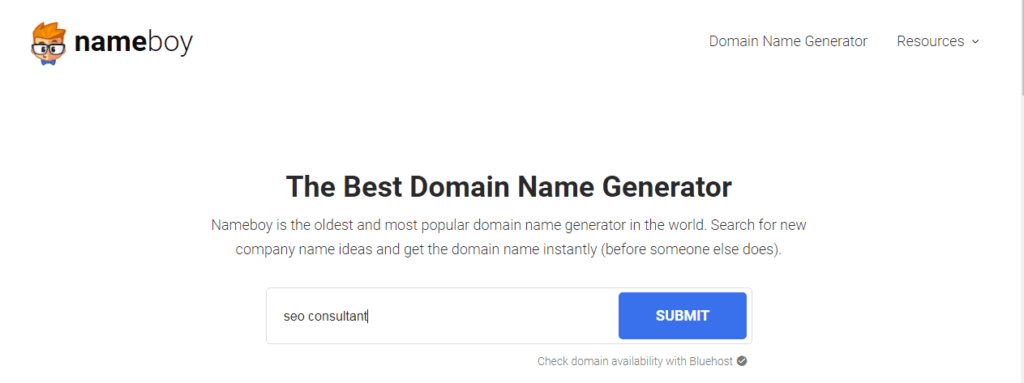
Even though there are more than 350 million registered domain names out there, it is easy to think that all good domains have been taken. Searching for domain names on your own will take some time. This is where a domain name generator like nameboy.com can help. These tools are free and automatically search for clever domain names based on your defined keyword parameters.
9.11- Buy it Before Someone Else Does
Everyday users from around the world buy thousands of domain names. If you have finally found a domain name that is perfect for a business idea, then buy it at your earliest since it won’t be long before someone else with the same idea and inspiration comes along to buy it. Think of domain names like real estate; millions of people are actively seeking out good websites. If you don’t act fast, then someone will register your idea immediately.
Get ahead with SEO Resellers Canada. No matter what niche or difficulty, our SEO experts will take you to the front page of SERP. Click here to get in touch with us now!















